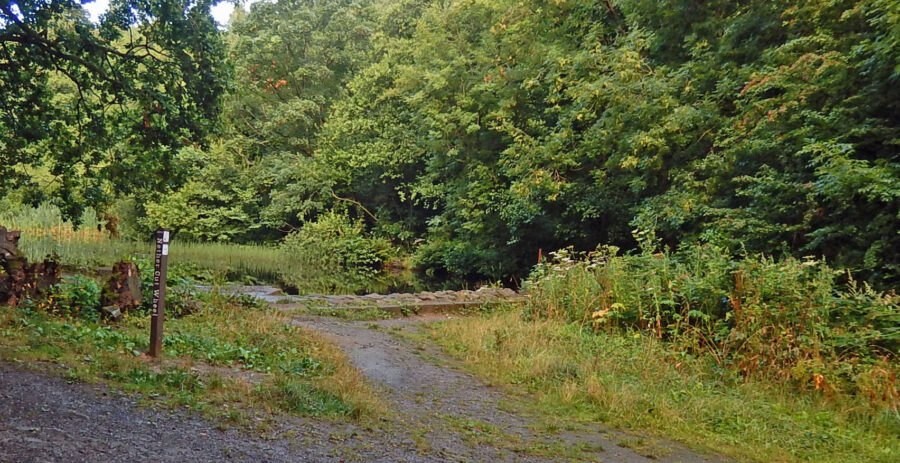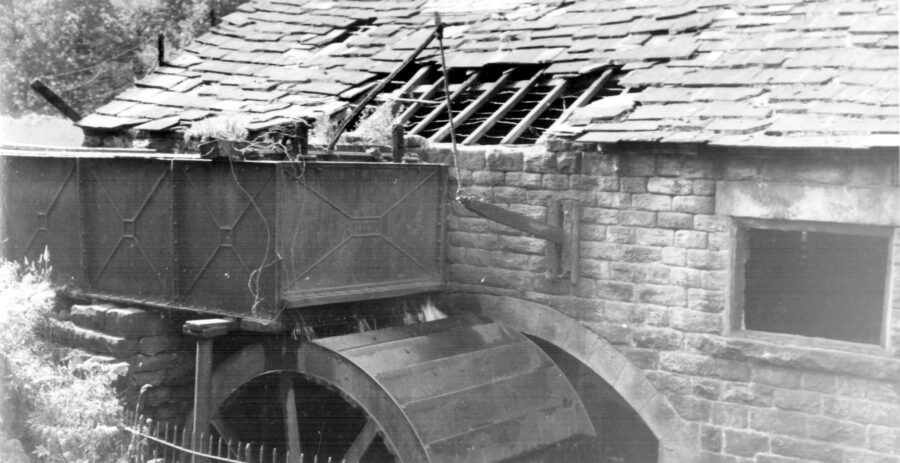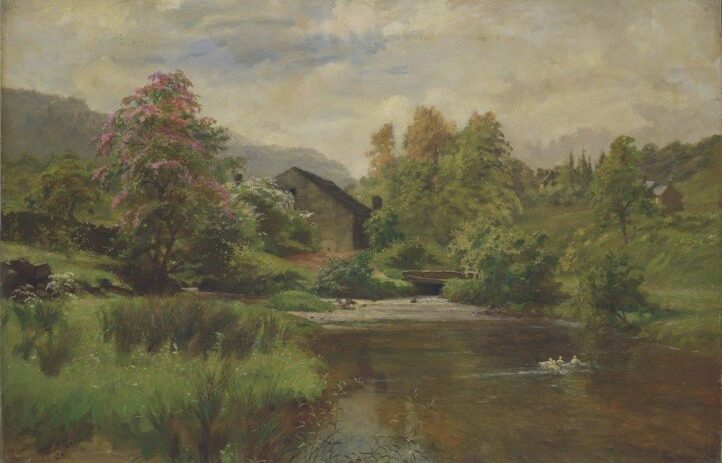
Introduction
Nether Cut Wheel dates from around 1719. It was completely rebuilt after about 60 years with cutlery and scythe grinding continuing until at least 1939. It was the last mill in the valley to be worked by waterwheel – it is thus one of the few in the valley to have been working in living memory. The building was demolished as late as 1956 – all traces of it have been removed. The mill dam still has open water.
History (c. 1719–1950s)
Also known as: Kay Wheel, Marshall Wheel, New Wheel, Nether Cutford Wheel.
Main trades:Cutlery and scythe grinding.

Nether Cut Wheel is thought to have been built around 1719 and completely rebuilt around 1777. It originally ran four trows, but in 1794 had nine trows, employing 15 men. The mill suffered a rattening* incident in 1850 for using non-union labour – most of the mills in the valley used non-union labour but Nether Cut seems to have been singled out for special attention and was attacked on several occasions. The Sorby family leased the site for many years until 1920, when it moved into the hands of the Kay family who carried on grinding work for the Sorby’s.
*Rattening: a series of attacks on ‘blackleg’ establishments by a militant faction among the emerging Trade Unions: collectively known as ‘The Sheffield Outrages’. The attacks generally involved the removal of essential tools or items of equipment (often the driving bands of the grindstones) but in some cases escalated to arson and machine-breaking.

Nether Cut was the last mill in the valley to be worked by waterwheel; scythe grinding at one trow continued until at least 1939. The building was demolished as late as 1956 – all traces of it were removed but the large mill dam has been preserved.
Nether Cut Wheel is one of a few in the valley that had no weir – the mill dam was fed directly via the tail goit from Upper Cut Wheel, now running through a tunnel under Rivelin Valley Road.
What's there now?
No signs of the building are left, but the large mill dam still has open water. The mill dam is fed by water from Upper Cut, passing along a goit which goes through a culvert under Rivelin Valley Road.
Water from the mill dam outfalls into the river in two places: (1) mostly over an overflow and down a narrow stone channel and (2) culverted beneath the slope and into the tail goit, which runs between the two paths to feed directly into the Little London mill dam near the weir.
In 2012, the RVCG undertook repairs to the stonework along the top of the dam wall near the overflow after some of the capping stones were stolen. A metal grille was installed on the outlet in 2016 by Sheffield City Council to help prevent blockage by debris.
![riv_nc_03 The Nether Cut mill dam. [Photo: Sue Shaw, June 2015]](https://rivelinvalley.org.uk/wp-content/uploads/2021/03/riv_nc_03-900x463.jpg)
Nature and wildlife at Nether Cut Wheel
The Nether Cut mill dam was cleared and dredged in 1967, at which time it was stocked with Roach and Tench. It is still largely open water, now with Trout and Perch, and with a variety of wetland plant species such as Angelica, Bitter-cress, Creeping Buttercup, Figwort, Horse-tail, Reedmace (Bulrush) and Water Mint.
This is a popular spot for the Heron to fish and Grey Wagtails can sometimes be seen on the exposed mud patches.
Look out for a patch of Wild Garlic on the bank to the left of the path up to Rivelin Valley Road, and another near the fork in the path.
Art at Nether Cut Wheel
Nether Cut Wheel was one of the few mills still working when the Rivelin Valley Artists were painting in the 1920s. Men were grinding scythes here until the late 1930s. This must have made it particularly appealing to the artists. Robert Scott-Temple’s large oil painting of the mill in its riverside setting is particularly impressive, and shows the crystal clear quality of the river, the stone foot-bridge giving access for workers from Stannington, and the relatively open nature of the valley.

Ben Baines’ watercolour shows the waterwheel that provided the mill with its power (although he showed some artistic licence as the positions of the wheel and the chimney, and the roof line do not match the old photographs).

A picture of an oil painting by an unknown artist in 1857 is available in the ‘Picture Sheffield’ collection, but with no further information given. We’d love to hear from you if you know anything about this painting.

Location
The Nether Cut Wheel site is located close to Glen Bridge, on the downstream side of the S-bend on Rivelin Valley Road. The site is owned by Sheffield City Council and there is open access. A public footpath passes the site and is easily accessed from Rivelin Valley Road.
A marker post installed at the site by Rivelin Valley Conservation Group gives a brief history and links to this website.
OS Grid reference: SK 3126 8788
Nearest postcode: S6 5SF
